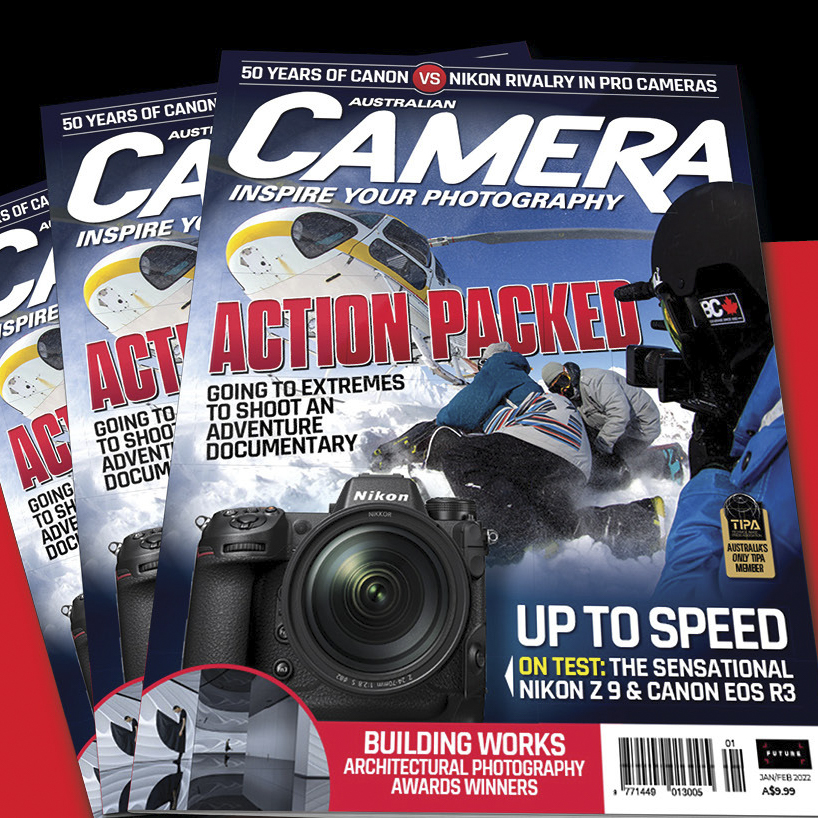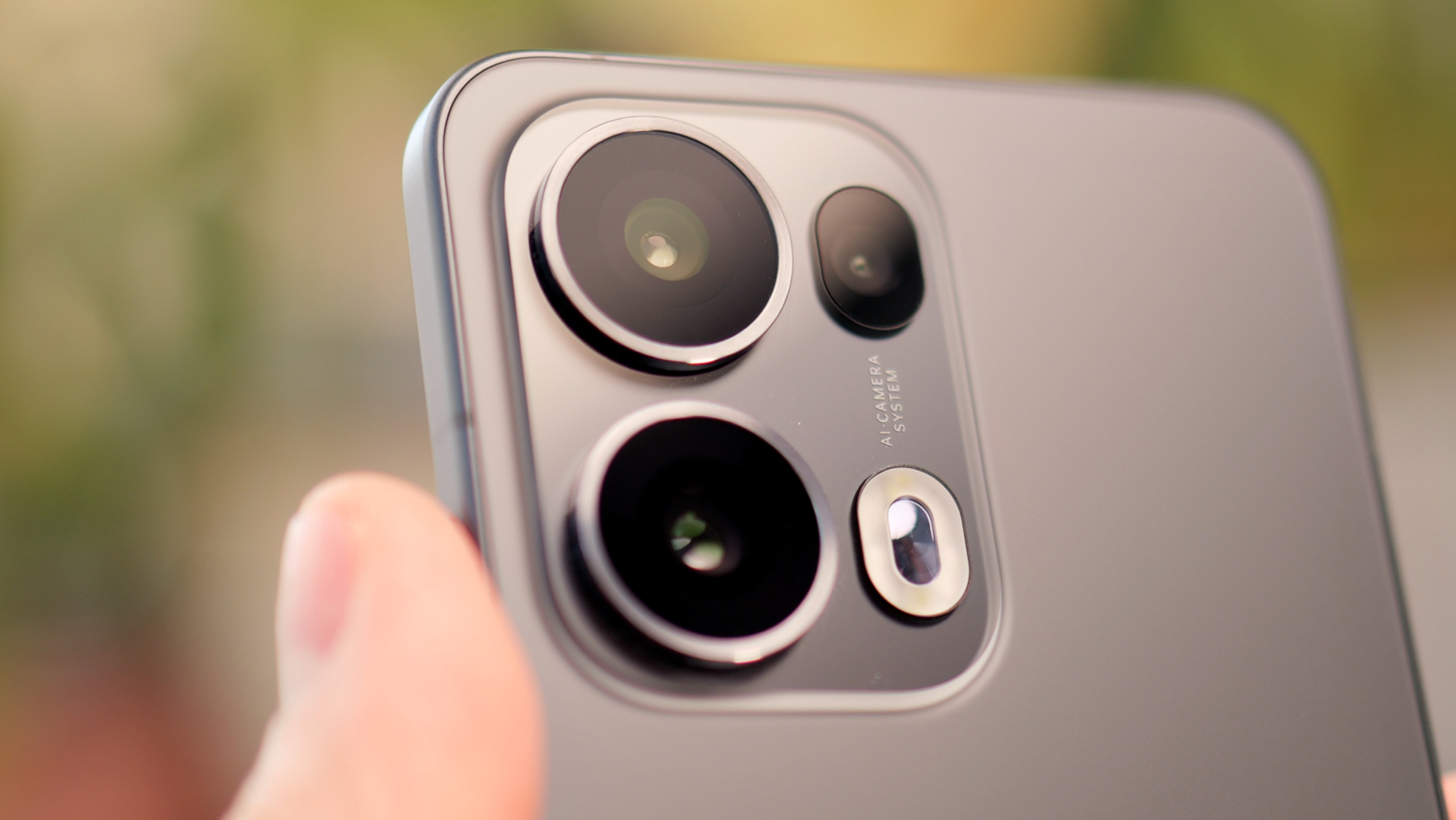Australian Camera Magazine Imaging Awards 2020 – all the winners
Celebrating the best of the best, here are the winning cameras and lenses in Australian Camera Magazine's annual awards
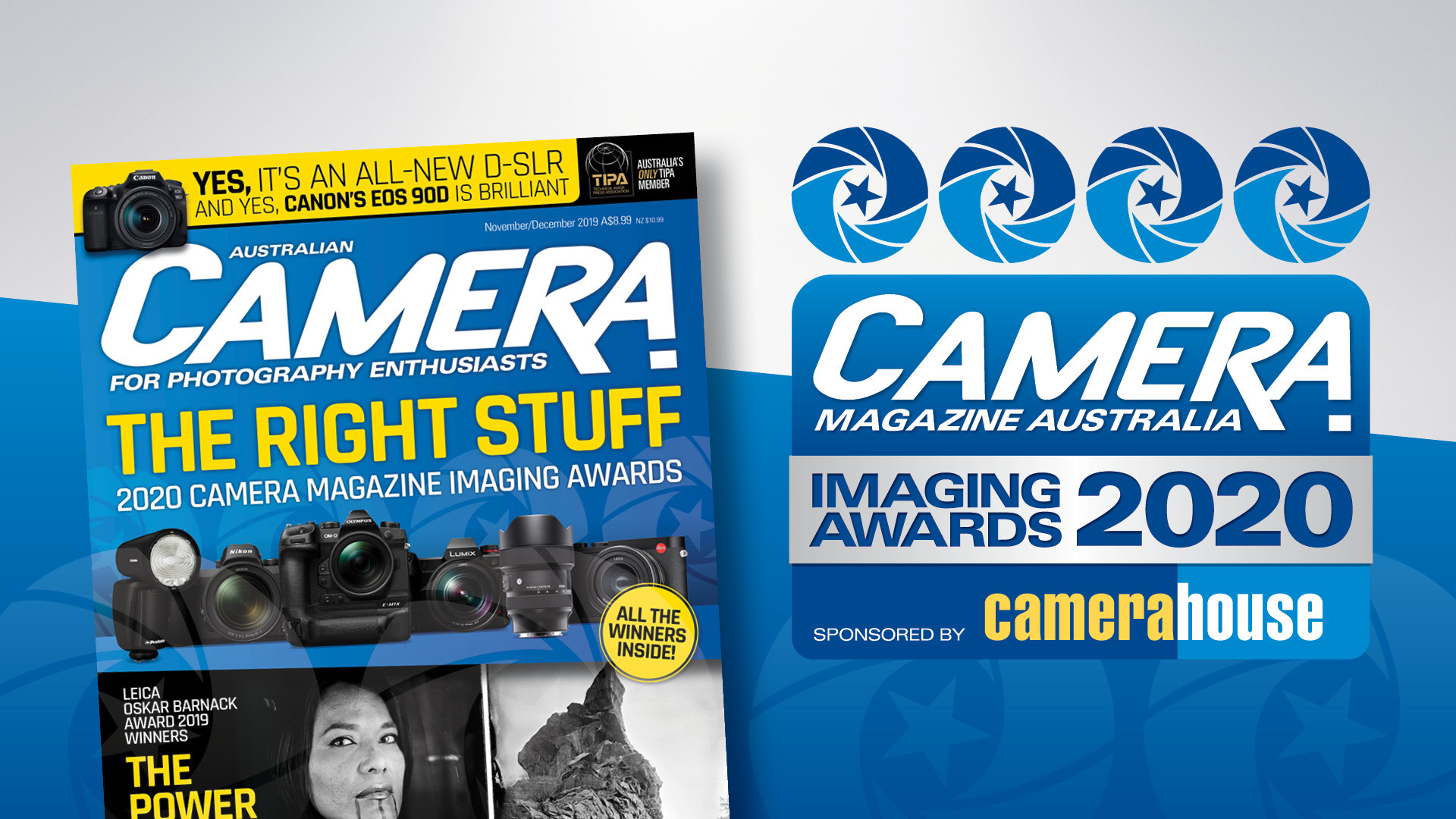
The annual Camera Magazine Imaging Awards recognise excellence in the design and execution of imaging products. This year there are ten categories and to be eligible, products had to go on sale around Australia from 1 October 2018 to 30 September 2019.
A week may be a long time in politics, but this year has been a particularly long one in the camera industry if it’s to be measured in new product releases. This time last year – as we considered potential winners in our annual recognition of design excellence in imaging products – we were on the brink of significant change. As we noted at the time, the big mirrorless announcements from the likes of Canon, Nikon and Panasonic had been made, but the cameras themselves were still some way off, setting up the potential of a dramatic 2019.
Only the Nikon Z 7 made the eligibility cut last year, but won the Professional Mirrorless Camera category by a canter, suggesting there would be some intriguing contests for the 2020 prizes. Since then the full-35mm mirrorless cameras have mostly hogged the headlines, but it’s been busy in the so-called ‘crop sensors’ too (i.e. Micro Four Thirds and ‘APS-C’) with, in particular, Olympus’s OM-D E-M1X really exploiting what’s achievable with the mirrorless configuration and a smaller sensor.
What we didn’t see a lot of in 2019 was new DSLRs. In fact, there were just two, and one of these was a pretty minor upgrade of an existing model. The other, however, was a bit of a surprise package and would have been a winner even in a much more crowded field, such is its excellent mix of ergonomics, capabilities and performance.
But is this the end of the road for the DSLR? Nikon has announced that there’ll be a D6 pro-level model, but anything launched around now would have been in development for at least a couple of years so the big question is whether any brand new DSLR designs are being initiated now. Given that the imperative for both Canon and Nikon has to be to fast-track their new mirrorless camera systems, you’d think all resources would be focused on this task (and bear in mind Canon actually has two mirrorless systems). Plus, of course, despite the EOS 90D being so good, the DSLR is now old tech, and mirrorless cameras will only continue to get quicker, more advanced and more capable, especially as more AI-based functions are introduced. However, this isn’t necessarily translating into increased camera sales right now, despite there being so many very appealing mirrorless models on the market. As we’ve noted previously in this magazine, there will be a ‘lag’ while DSLR owners consider the implications of switching to mirrorless which could entail a change of brand and sensor size, and will certainly mean new lenses at some point. Consequently, it’s not a decision to be taken lightly and anybody with a DSLR that’s not all that old may well delay making the switch, at least until they see how the relevant lens system is progressing.
With such a big reservoir of in-use D-SLRs, new lenses in the Canon EF and Nikon F mount continue coming, but even this shows some signs of slowing, and the ‘independents’ are increasingly concentrating on the mirrorless mounts as evidenced by recent releases from, notably, Sigma and Samyang.
There’s no doubt that the future in interchangeable lens cameras is mirrorless, but as is always the case with technological change, it takes a while for the market to catch up and, inevitably, the transition period will throw up its challenges. Nothing really changes then.
Get the Digital Camera World Newsletter
The best camera deals, reviews, product advice, and unmissable photography news, direct to your inbox!
And the winners are...
DSLR
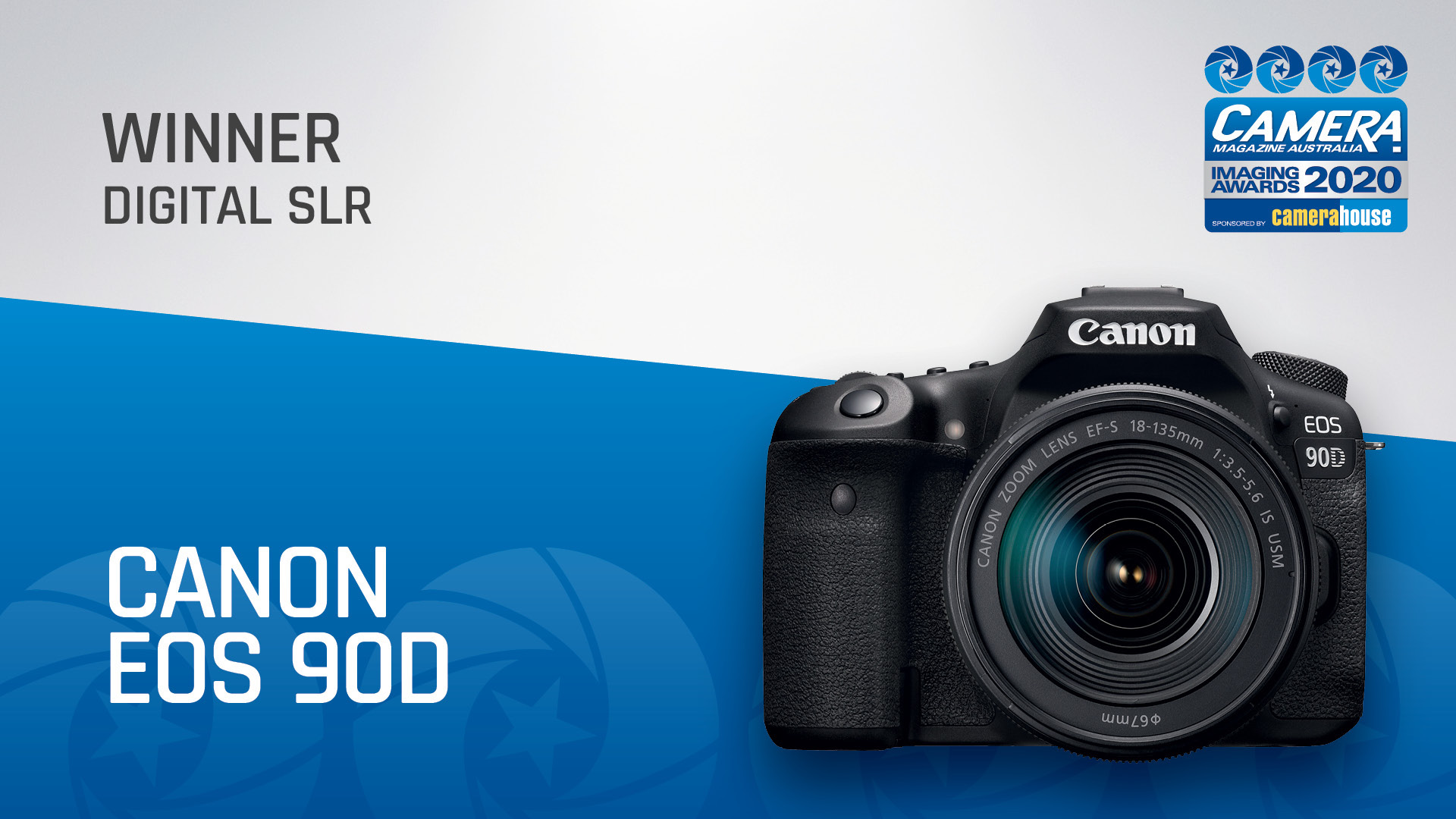
Digital SLR winner: Canon EOS 90D
We kick off with the DSLR category.
Of course, the Canon EOS 90D wins this category by being the only new DSLR of note launched during our period of eligibility, but this shouldn’t detract from what is actually a truly superb camera. In fact, it looks a bit like Canon has put everything it knows about DSLRs into the 90D so it does everything very well… and it’s both comparatively affordable and comparatively compact (well, for a DSLR at least).
If this was to be the last Canon EOS DSLR (which, by the way, we don’t think it is), the 90D would be a fitting way to end a long and very illustrious line. In fact, it might just be a bit too good if Canon was really intent on getting you into a mirrorless camera. You don’t have to spend too long with the 90D to start thinking, “So just why did we need to go mirrorless then?”. Of course, there are reasons, but you won’t really be worrying about them if you get behind the EOS 90D… it’ll do 10fps with full AF/AE adjustment, there’s 32.5 megapixels on call and 14-bit RAW capture (with a handy cRAW option for smaller file sizes), plus a full pentaprism viewfinder in all its optical glory. No need to worry about refresh rates or lag here.
But here’s the rub. Switch into live view mode – when the 90D effectively becomes a mirrorless camera – and there’s a whole lot of extra goodness, starting with Canon’s ‘Dual Pixel CMOS AF’ which maintains phase-difference detection measurement, but now with a massive 5481 points to give close-to-full frame coverage. Additionally, exposure metering is via 315 zones (up from 216 in optical mode), the continuous shooting speed edges up to 11 fps and the sensor-based shutter now delivers 1/16,000 second. And, of course, you can shoot 4K video which uses the full sensor width so it’s optimum quality with no cropping. Did we mention that the sensor is ‘APS-C’ format?
Canon may be pushing full-35mm elsewhere, but here it’s saying never mind the size, look at the quality. The 90D’s imaging performance – including at high ISOs – is a compelling argument for sticking with the smaller sensor, especially as Canon’s processing is squeezing every drop of IQ out of this one. So, significantly, when full-35mm mirrorless cameras are the current super models, an ‘APS-C’ format DSLR is a big winner.
Consumer Mirrorless Camera
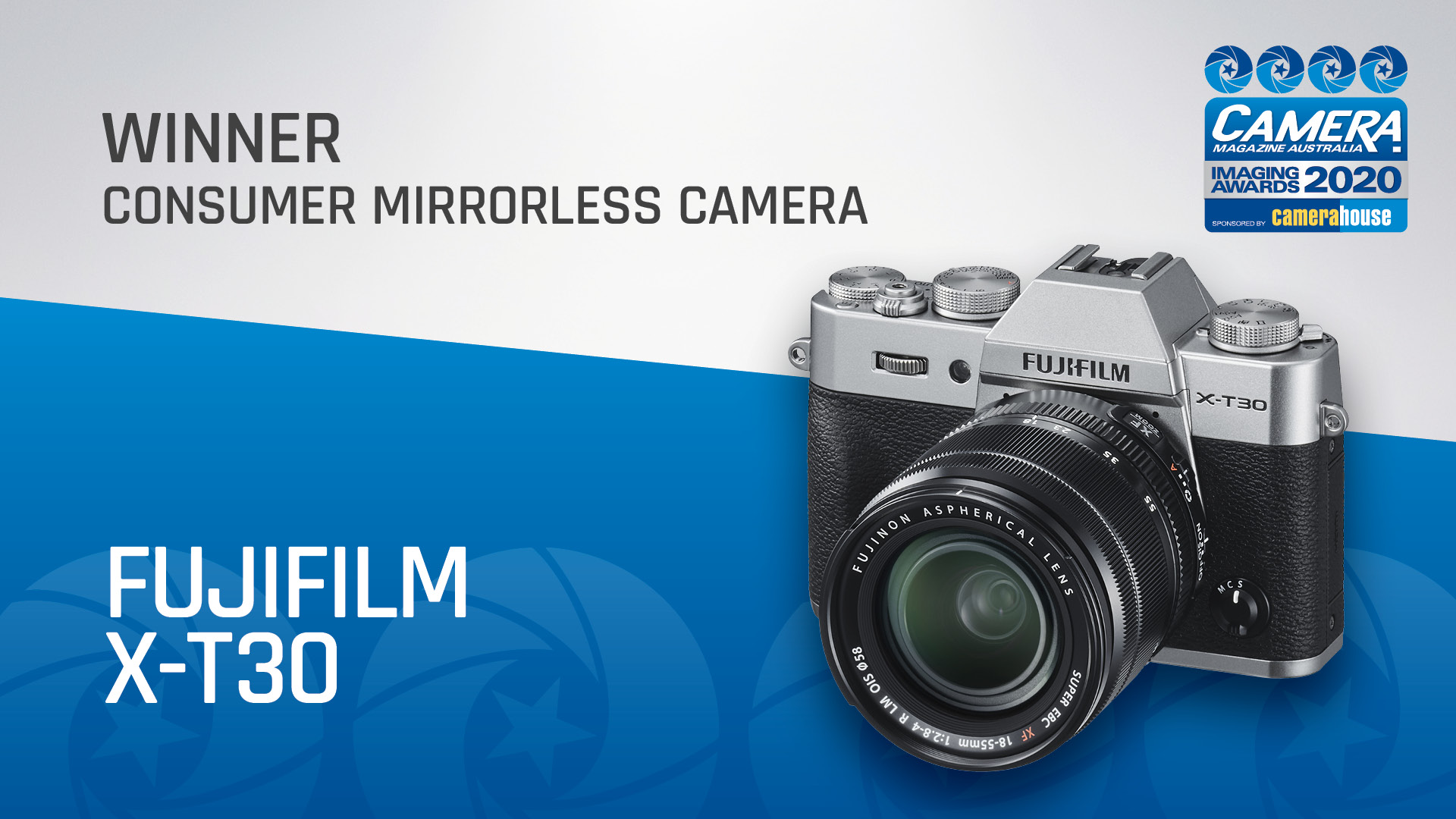
Consumer mirrorless camera winner: Fujifilm X-T30
Not surprisingly, all three of our categories for mirrorless cameras were hotly contested this year. Here’s our top pick in consumer-level models.
They must be putting something in the water at Fujifilm because, let’s be honest here, there hasn’t been a dud camera at either the enthusiast or pro level for quite a while – X-H1, X-T3, X-T100, X100F, GFX 50S, GFX 50R, GFX 100 (starring elsewhere in this year’s awards) and now the very tasty-looking X-Pro3.
What’s the secret? Well, of course, the tech is spot-on and Fujifilm has drawn on its long experience in color reproduction to develop the ‘Film Simulation’ profiles which are the best in the business, bar none. But there’s something else. From the top down, they’re all mad photography enthusiasts at Fujifilm and this exhibits itself in cameras that great to look at, enjoyable to use and, above all else, are an experience in themselves. Digital capture can be a rather soulless and clinical affair – press the shutter button and move on – but not with Fujifilm. These cameras demand that you get more involved and get back to the essence of photography with all its emotional, psychological and, yes, even spiritual elements (something that Fujifilm, for all its prim and proper Japanese corporate-ness actually acknowledges, to its great credit).
So the Fujifilm X-T30 would have won this category on sheer character alone, but it’s actually also a very fine camera, incorporating quite a bit of what makes the X-T3 so brilliant in an even more compact package that’s also a lot more affordable. With all its dials and levers, the X-T30 just looks so appealing in a ‘real camera’ sort of a way.
Operationally, Fujifilm again proves that there’s no need to re-invent the wheel when comes to the sheer intuitiveness of dials, but there’s also a touchscreen with all the contemporary conveniences that this brings. You just can’t resist the desired to pick up the X-T30 and start shooting, but then you quickly start to appreciate just how compact it is… and just how capable it is. The performance from the current generation ‘X-Trans CMOS 4’ sensor is truly superb with a high ISO performance that sets the standard for the ‘APS-C’ format. If the X-T30 is built to a price, it’s not obvious and there’s nothing critical missing from what’s actually a long list of features… but it’s the satisfyingly engrossing experience that make this camera a real winner.
Enthusiast Mirrorless Camera
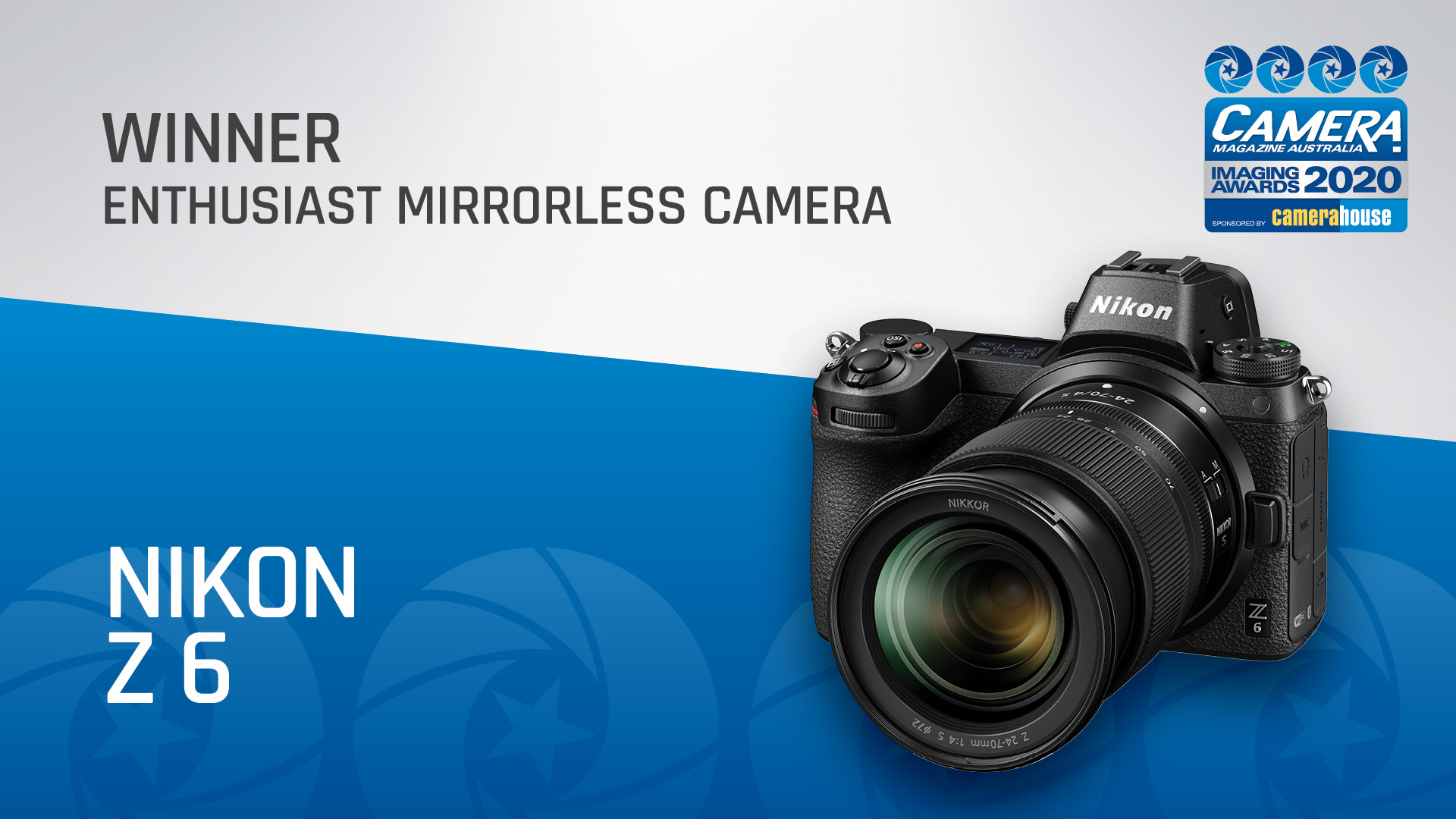
Enthusiast mirrorless camera winner
Not surprisingly, all our categories for mirrorless cameras were hotly contested this year. Here’s our enthusiast-level mirrorless champion.
Although announced at the same time as its higher-resolution sibling, the Nikon Z 6 went on sale much later, hence its eligibility for this year’s awards. It’s competing in a hotly-contested category which includes Canon’s much more affordable EOS RP and Panasonic’s much more compact Lumix G95.
As we noted with the Z 7, the brilliance of Nikon’s Z mount mirrorless cameras is how they look, feel and work reassuringly like a Nikon high-end camera should so, if you’re transitioning from an F mount DSLR, there’s no pain and plenty of gain. Ergonomics have always been a Nikon strong suite, and the Z 6 has same operational intuitiveness that translates into exceptional efficiencies… except, of course, being mirrorless, there are greater efficiencies everywhere; including with the autofocusing, the shooting speeds and the video recording capabilities.
But while the Z 6 might retain plenty of traditional values on the outside, on the inside Nikon has embraced everything that’s possible with the mirrorless camera configuration. There’s a 3.68 megadots resolution EVF, five-axis sensor-shift image stabilisation, 4K video with a 10-bit HDMI output, a sensor-based shutter for silent shooting, and hybrid contrast/phase-detection autofocusing (now with firmware-upgraded tracking capabilities).
The key point of difference with the Z 7 is resolution with the Z 6 packing 25.28 megapixels on its BSI-type CMOS, in return for which the maximum shooting speed is upped to 12.0 fps… and with continuous AF adjustment. It’s also significantly cheaper which significant increases the value proposition because you’re still getting a lot of Z 7 stuff, including the same weather-sealed magnesium alloy body shell. In fact, even with the Canon EOS RP being quite a lot cheaper again, it’s still the value factor that gets the Nikon Z 6 over the line in this category, as it’s ultimately the more competent and capable camera overall.
Professional Mirrorless Camera
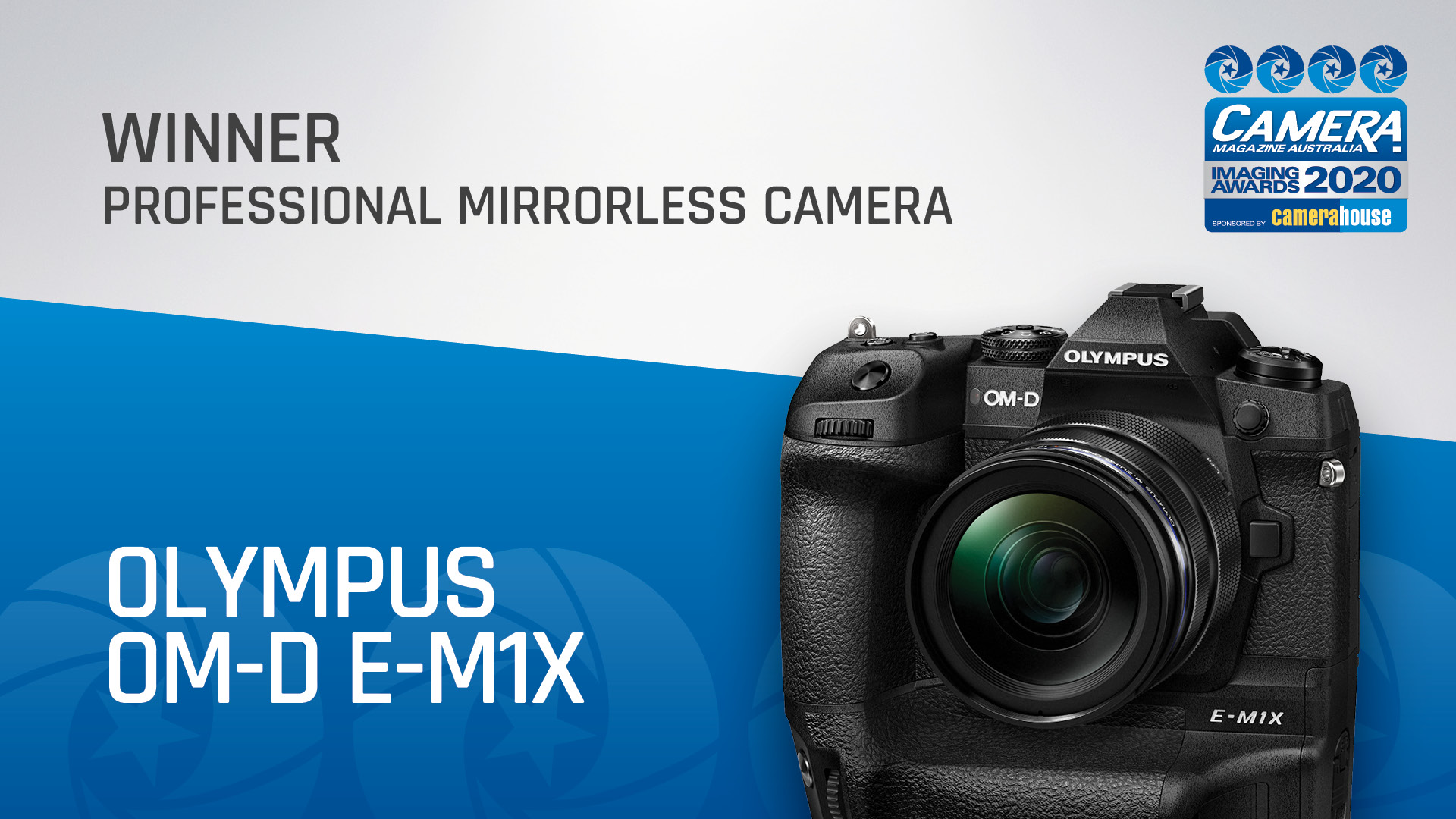
Professional mirrorless camera winner: Olympus OM-D E-M1X
All our categories for mirrorless cameras were hotly contested this year, but none more so than that for pro-level models. Yet, for us, one camera really stood out above them all…
Hang on! An M43 camera beating a bunch of models with full-35mm sensors. What’s going on? The OM-D E-M1X is what’s going on, arguably the most interesting and significant camera launched this year.
On a broader level, the E-M1X signals that Olympus hasn’t lost its mojo which is pleasing as the brand celebrates its 100th anniversary. And it also signals that Olympus hasn’t lost its edge for thinking outside the square and doing something different… and a bit daring, just like the original 35mm OM-1.
The E-M1X is a whole lot more than its sensor size, but it is also all about its sensor size as Olympus is exploiting the benefits of the smaller format across its OM-D system. The E-M1X may be the biggest OM-D model so far, but it’s a whole lot more compact than any sports-orientated DSLR, and in another world as far as its capabilities are concerned. What’s most important here, though, is that all the new technology and features in the E-M1X translate into real in-the-field benefits, particularly when shooting sports, action or wildlife.
You see it immediately in a much improved ‘strike rate’ with fewer – if any – missed frames due to autofocusing issues, lag or simply a lack of speed. The traditionally challenging situations for autofocusing – such as a racing car heading for you at full tilt – are handled with impressive ease by the E-M1X. AI-based subject recognition is already available from both Sony and Panasonic, but neither offer the modes that Olympus does and neither have executed the implementation quite as effectively either. Aside from the key specs – which all boast impressive numbers, such as 60 fps continuous shooting – Olympus has built the E-M1X like the proverbial brick dunny. Everything is over-specced – including the weather protection – with the expectation that the camera is going to take a bit of a beating.
You can go back to our road-test in Australian Camera magazine (March/April 2019 issue) to get the full effect of the OM-D flagship, but some noteworthy features are hand-held high-res multi-shot capture, ‘Live ND’ (very neatly executed in practice), up to 7.5 stops of IBIS-based correction, dual batteries and dual card slots, and not forgetting the amazing ‘Intelligent Subject Detection AF’ modes.
With the E-M1X Olympus is not only fully exploiting the benefits of the M43 sensor format, but also the benefits of the mirrorless camera configuration. Right now, there is no better interpretation of what’s possible with mirrorless when a bit of imagination, ingenuity and insight is brought to bear on a camera’s design.
Fixed Lens Camera
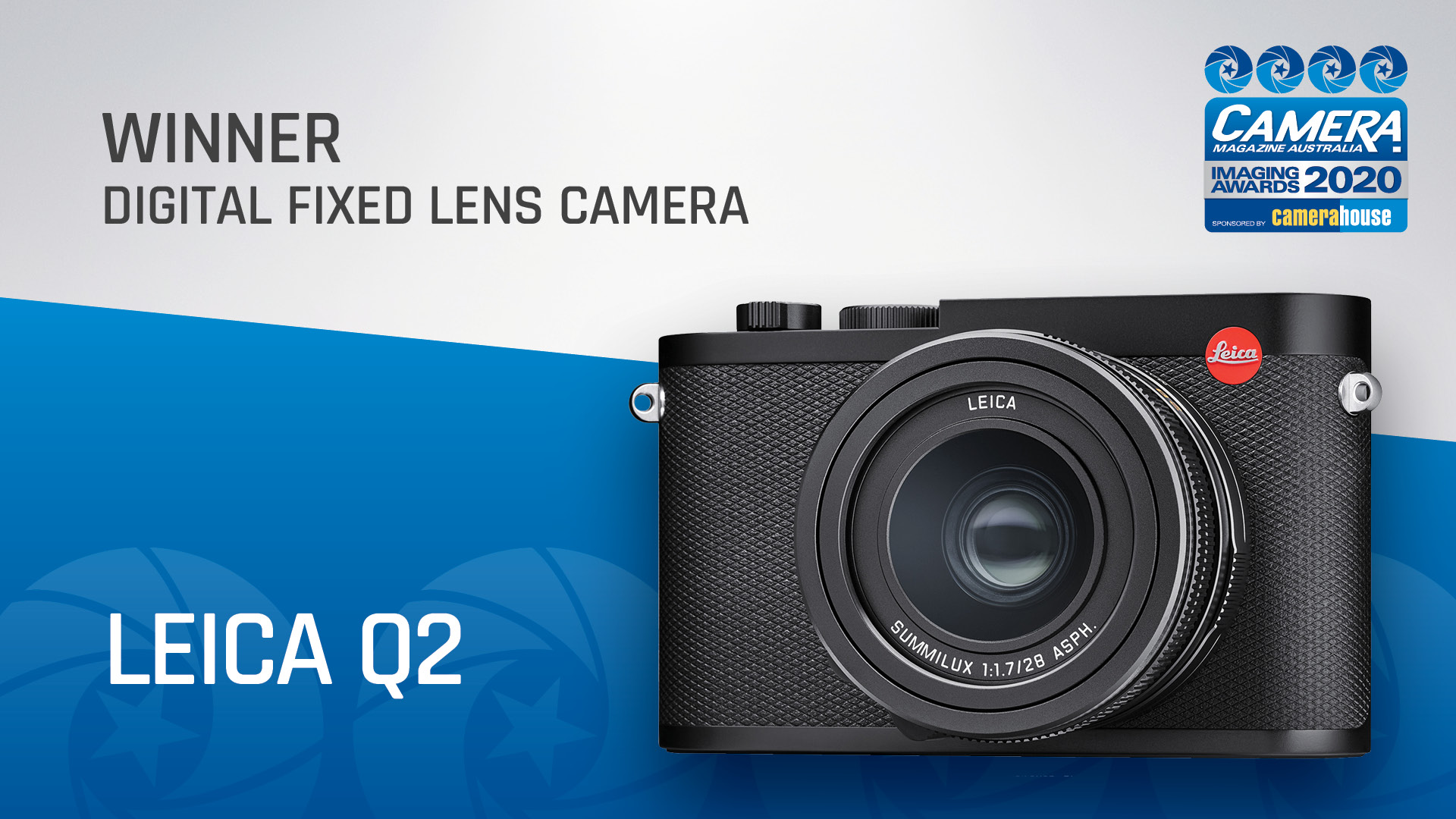
Fixed-lens camera winner: Leica Q2
Our fixed lens camera category included everything from superzoom models to ruggedised compacts, but in the end a modern-day classic won the day.
Even without its Leica badge, the original Q was a superb camera, combining style, features and performance in a hugely desirable package. Of course, the classic Leica M styling cues helped with the overall appeal, but underneath the Q was thoroughly modern, offering little luxuries such as autofocusing and, consequently, a lot more usability than even the interchangeable lens RF cameras. True. And especially true, if you generally only used one lens… such as a 28mm which has always been a surprisingly flexible prime focal length (just ask any cinematographer).
The Leica Q2 ups the desirability factor big time. It keeps the same Summilux 28mm f/1.7 ASPH fixed wide-angle lens, but behind it is now 50.4 megapixels of resolution which not delivers a massive amount of image quality, but makes the 35mm and 50mm crops a lot more useable… and even allows for a new 75mm-equivalent setting. A full set of Leica f/1.7-speed primes in the one camera? Well, not quite, there’s still a lot of flexibility here for a fixed-lens model. The sensor-based shutter enables continuous shooting at 20 fps and a top shutter speed is 1/40,000 second. Even with its FP shutter, the Q2 is capable of 10 fps… and with continuous AF/AE adjustment. If video is your thing, there’s 4K DCI at 24 fps – to match the cinematographic 28mm focal – or 4K UHD at either 24 fps or 25 fps. Full HD footage can be recorded at 24, 25, 50 or 100 fps, this last speed for slow-mo effects.
What else? AF using 225 measuring points (with face-detection and subject tracking), all the works for exposure control, a touchscreen monitor, an OLED-type EVF with a resolution of 3.68 megadots, a weather-sealed magnesium alloy bodyshell and both WiFi and Bluetooth LE connectivity. This already-tasty recipe is seasoned with a little Leica magic that is the Q2’s styling and handling.
Is this the perfect camera then? Well, if you could only have one, the Leica Q2 would very likely be the one.
Digital Hybrid Camera
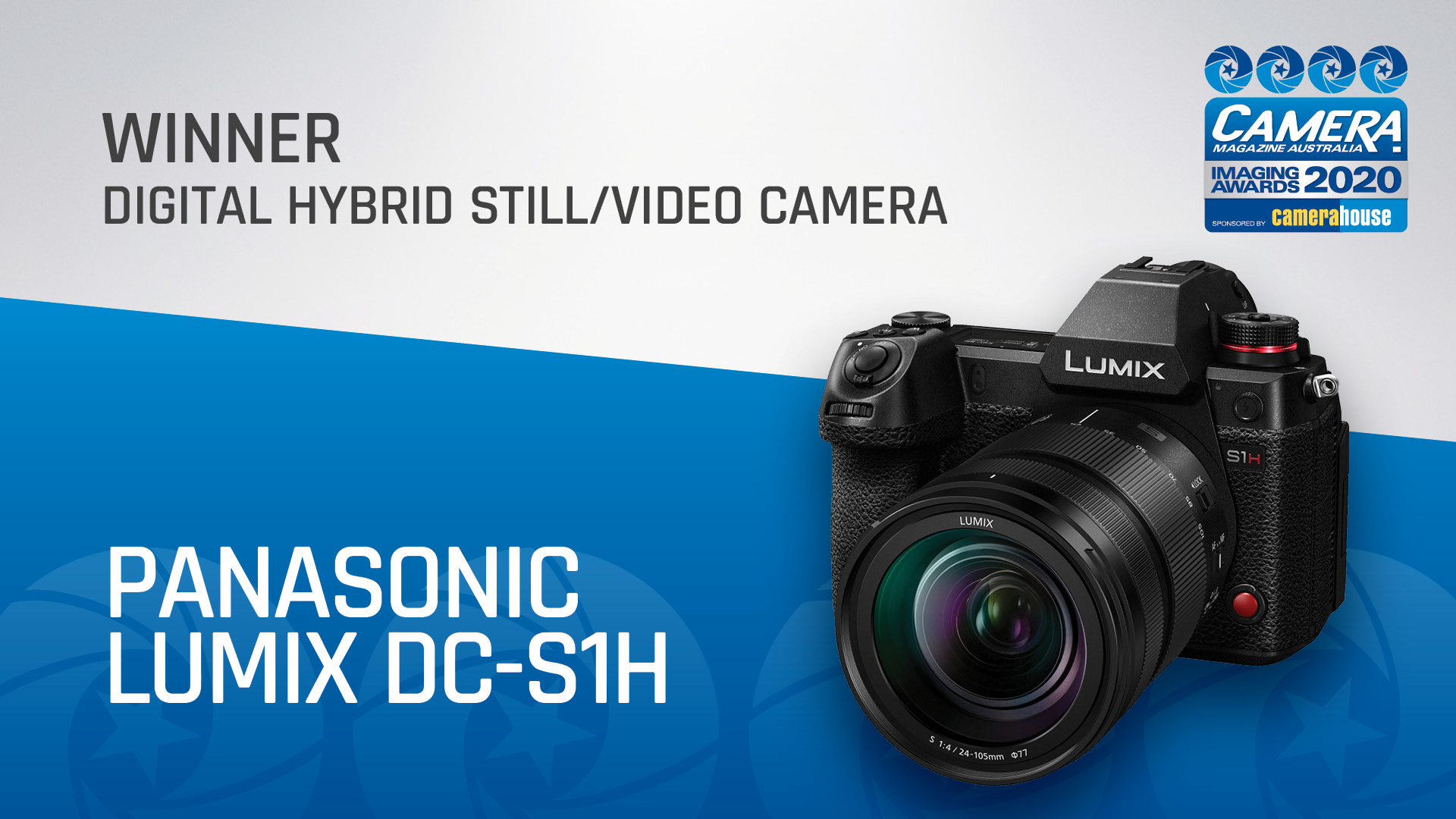
Digital hybrid camera winner: Panasonic Lumix S1H
No surprises with the winner of our hybrid still/video camera category.
Panasonic has had a bit of a mortgage on this category for quite a while, particularly with its GH series of Micro Four Thirds cameras which have become steadily more accomplished with every new generation, culminating in the all-powerful but still very compact GH5S… now the darling of many film-makers.
It was only logical that the same thinking would be applied to the full-35mm format Lumix S line, and the result is the S1H. There’s no doubt the main emphasis is on video-making here, but a huge amount of thought has gone into making this camera work for everybody from enthusiasts to pro cinematographers. To be honest, on paper the video features and specs look a bit daunting to the layman – more akin to a pro-level camcorder (which is intended, of course) than a hybrid mirrorless camera – but if you’re making films for a living, you’ll be licking your lips in anticipation.
While it may have a full-35mm format sensor, by pro camcorder standards, the S1H is laughingly compact and there are lots of benefits from having the bigger imager such as recording 6K/24p video in the 3:2 aspect ratio, 5.9K/30p video in the 16:9 aspect ratio, and 10-bit 4K in both the UHD and DCI resolutions at either 60 fps or 50 fps. All are firsts for this class of camera.
Additionally, the C4K/4K UHD recording at 24p/25p/30p with 10-bit 4:2:2 10-bit color is recordable in-camera, and the S1H simultaneously delivers a 10-bit 4:2:2 HDMI output. There’s a bewildering selection of formats, resolutions, codecs and compression regimes, but all of this equips the S1H for just about any video production requirement you care to think about. Then there’s in-body image stabilization, V-Log/V-Gamut profiles (giving a dynamic range of 14+ stops), a huge choice of variable frame rates for slow-mo effects, a tilt/swing monitor with touchscreen, and full weather protection (including for sub-zero temps).
By the by, the Lumix S1H is also a pretty decent stills camera with some handy feature crossovers (such as high-res multi-shot derived from the IBIS), but this isn’t why you’d buy it. You’re going to be buying the S1H because the same video feature set – and performance – in any other configuration would be much bulkier and cost a lot more money… and it would be able to shoot stills!
Medium Format Camera
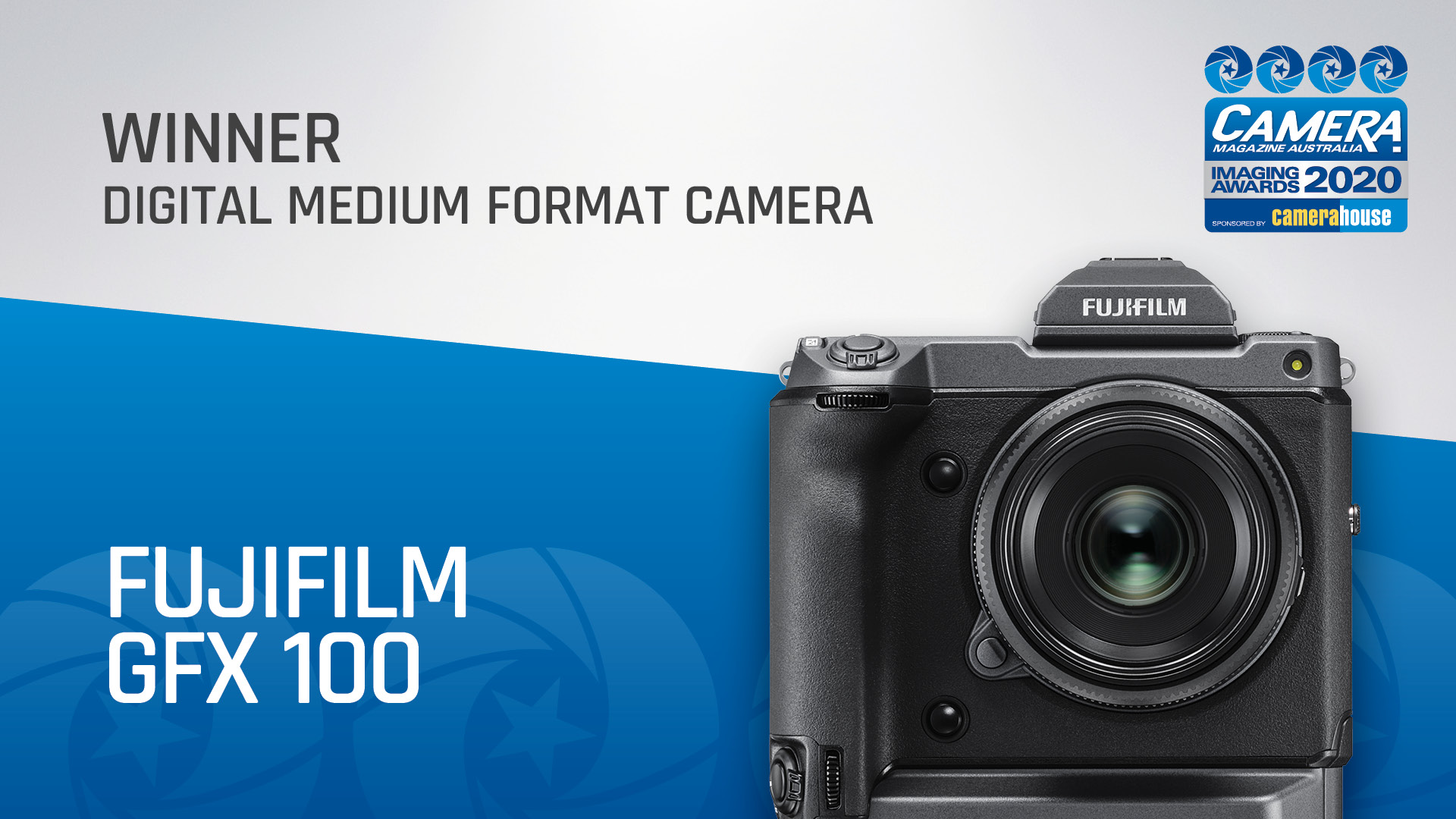
Digital medium format camera winner: Fujifilm GFX 100
In the medium format category, Fujifilm continues to shake things up.
A mainstream 100 megapixels medium format camera? Now there’s something that wouldn’t have been thought possible not so long ago. But Fujifilm has succeeded in turning the digital medium format camera world on its head with its GFX series mirrorless models and, somewhat surprisingly, the GFX 100 works the concept even more effectively than its 50 MP siblings. In fact, it works so well, you’ll find yourself thinking, “Y’know, I can’t think how I managed with less than 100 megapixels resolution in the past”.
The Fujifilm GFX 100 qualifies as ‘mainstream’ on a number of levels, starting with the fact that it doesn’t cost the same money as an Alfa Romeo and so you won’t still be in debt when it becomes obsolete. And then it has a whole bunch of features that mean it’s not very much different from any D-SLR in terms of functionality and operation. Much of this is derived from a long list of ‘firsts’… apart from being the first 100 megapixels mirrorless digital medium format camera, of course. The GFX 100 is also the first with a BSI-type sensor, the first with in-body image stabilization, the first with PDAF pixels, the first with 4K video (and obviously the first with 10-bit and F-Log or HLG), the first to achieve 5.0 fps continuous shooting and the first to use dual batteries on-board with in-camera recharging. It’s also the first 100 MP camera with a fully weather-proofed and insulated bodyshell. Wow! A 100 MP camera you can actually get wet and even use in sub-zero conditions.
What’s more, thanks to the IBIS which gives up to 5.5 stops of correction for camera shake, you really can think about shooting hand-held. Then there’s 5.0 fps continuous shooting, 425-point phase-detection AF, a top shutter speed of 1/16,000 second, a detachable EVF with 5.76 megadots res, three-way tilting monitor screen with touch controls, all the ‘Film Simulation’ profiles and the normal set of ‘PASM’ exposure controls. In fact, there’s pretty well everything you’d get on the X-T3 except for the 33x44 mm format sensor packing a solid 102 megapixels. And, for the record, this sensor size is 1.7x bigger than full-35mm and 4.0x bigger than ‘APS-C’.
Best of all, while GFX 100 may look big and unwieldy, it actually handles like a dream thanks to a clever GUI and great ergonomics. In reality, it’s no more of a handful than either the Canon EOS-1D X Mark II or Nikon’s D5, but delivers rather more reward for effort. We’ve described the image quality as “beyond stunning” and that pretty well sums up the GFX 100 as well.
Prime Lens
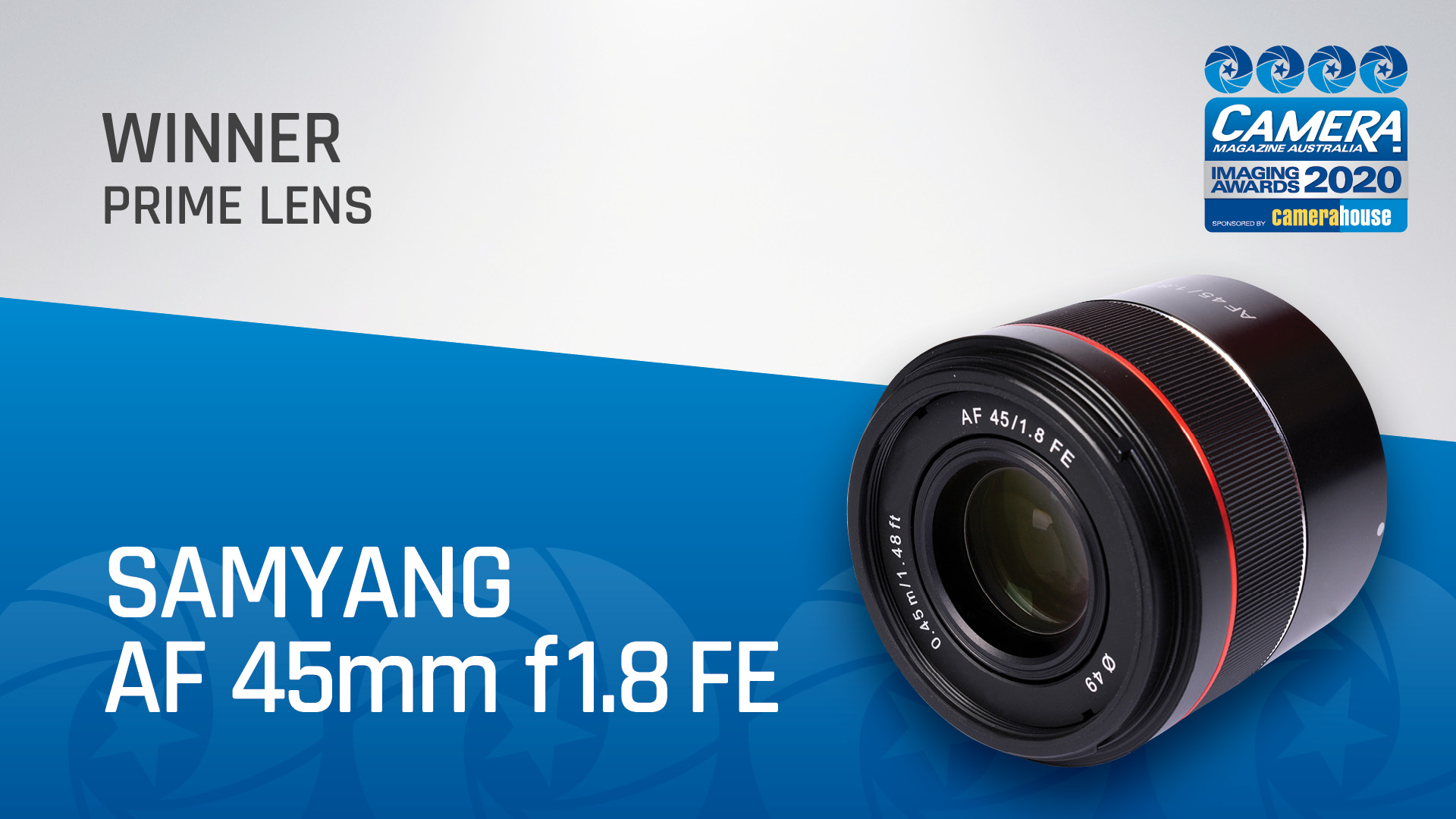
Prime lens winner: Samyang AF 45mm f/1.8 FE
The lens categories are now very hotly contested as all the mirrorless systems ramp up with models from both the camera makers and the independents. Winning here is a big deal.
For a long time there was what virtually amounted to a ‘secret society’ of Samyang lens users who had discovered just how much optical performance was available for so little money. Cinematographers were some of the keenest supporters – even before Samyang started making lenses specifically for this application – but the whispers soon reached the ears of canny photographers too. If you didn’t mind manual focusing and prime focal lengths, Samyang lenses represented unbeatable value for money.
They still do, but now the company is expanding its horizons and, locally, thanks to a much more pro-active distributor, the secret is out. Samyang was quick to join the mirrorless revolution and there’s now a growing line of FE mount lenses with autofocusing. Undoubtedly the most interesting of them is the latest… an ultra-compact 45mm prime with a fast maximum aperture of f/1.8. While the A7 series camera bodies, in particular, are quite compact even Sony itself is still making comparatively bulky lenses, especially the faster zooms. In comparison, the Samyang AF 45mm f/1.8 FE is just 56.1 millimetres in length and weighs in at a mere 162 grams.
Consequently, on a Sony A7 body it looks right at home and feels beautifully balanced too. The autofocusing supports Sony’s AF modes, including DMF (Direct Manual Focusing) which provides a full-time manual override for fine-tuning. The flush-fitting focusing collar is fly-by-wire electronic, but still feels nicely weighted. Linear focus motors ensure smooth and linear AF operation.
The optical construction comprises seven elements in six groups with two aspherical types and one made from optical glass with extra-low dispersion (ED) characteristics. The result is an optical performance that far exceeds expectations, including for centre-to-corner sharpness (even at f/1.8), and the correction for both chromatic aberrations and distortion. The nine-blade diaphragm ensures nicely rounded out-of-focus effects, making the most of the shallow depth-of-field at f/1.8. And, of course, it’s worth noting that 45mm is closer to the standard focal length for the 24x36 mm image size rather than 50mm.
This was a big category this year – especially with all the prime lens releases from the 35mm format mirrorless system newcomers – but in the end, it was easily won by the little lens that could.
Zoom Lens
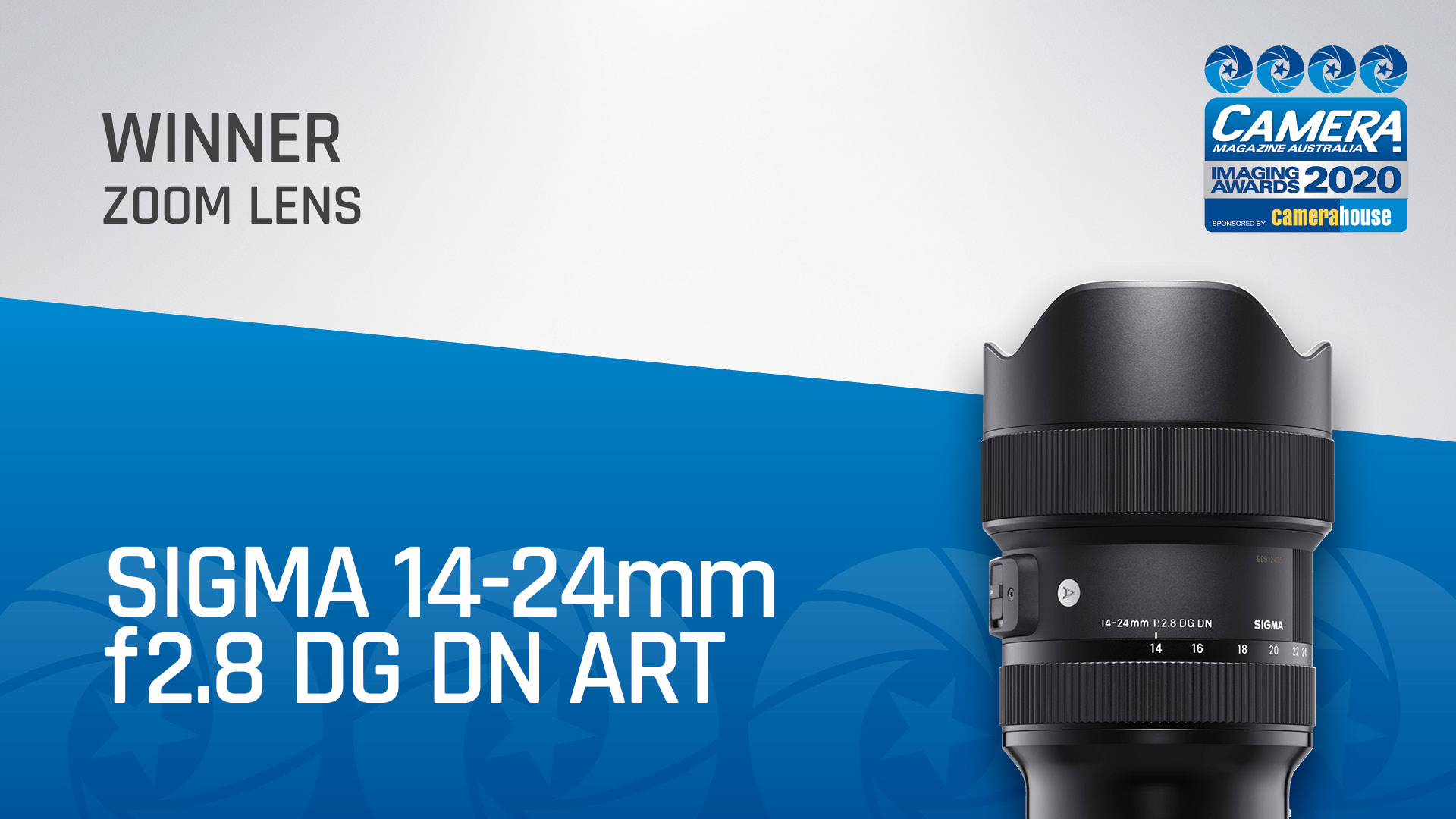
Zoom lens winner: Sigma 14-24mm f/2.8 DG DN Art
Given how many new zoom lenses we’ve seen over the last 12 months, picking a winner here was a challenge, but one ticked all the boxes.
Arguably one of the biggest assets of the L Mount Alliance has to be Sigma’s membership which, pretty well immediately, has given the owners of Leica SL and Panasonic Lumix S cameras access to the multi award-winning Art line of premium lenses. Would you put a Sigma Art lens on a Leica SL2? Well, we think so, and so probably does Leica given they’re all happily co-operating in the L Mount club.
The first Sigma Art lenses for the L mount (as for Sony FE) were essentially adaptations of models originally designed for D-SLRs, but now comes the ‘DG DN’ series which make the most of what the mirrorless configuration enables… namely combining very wide-angle focal lengths with a fast constant aperture of f2.8. There are technical challenges here which Sigma has solved with a bunch of special elements – in fact, half of the optical construction’s total of 18. These include three with super low-dispersion characteristics, one of Sigma’s own ‘FLD’ types – which mimic the correction characteristics of a fluorite element without costing nearly as much – and three aspherical elements. This little lot collectively – and effectively – deals with distortion, chromatic aberrations, spherical aberrations and coma… all otherwise potentially problematic with a large-diameter ultra-wide zoom. Sigma’s new ‘Nano Porous Coating’ – which employs a porous silica as the multi-coating material – minimizes ghosting and flare (essentially, incidentally, via millions of nano-size holes). Sharpness and resolution subsequently benefit to the point where Sigma describes the 14-24mm as “the definitive lens for astrophotography”.
There’s the typical Sigma thoroughness in the external design too – metal alloy battery tubes, weather sealing, a moisture repellent coating on the front element, a lens mount hewn from a solid chunk of brass and, most welcome on an ultra-wide lens, a rear filter holder. An 11-blade diaphragm, a super-fast stepping motor for AF and Made-In-Japan precision complete what is truly a masterpiece as far as optical design and engineering are concerned.
Innovative Product
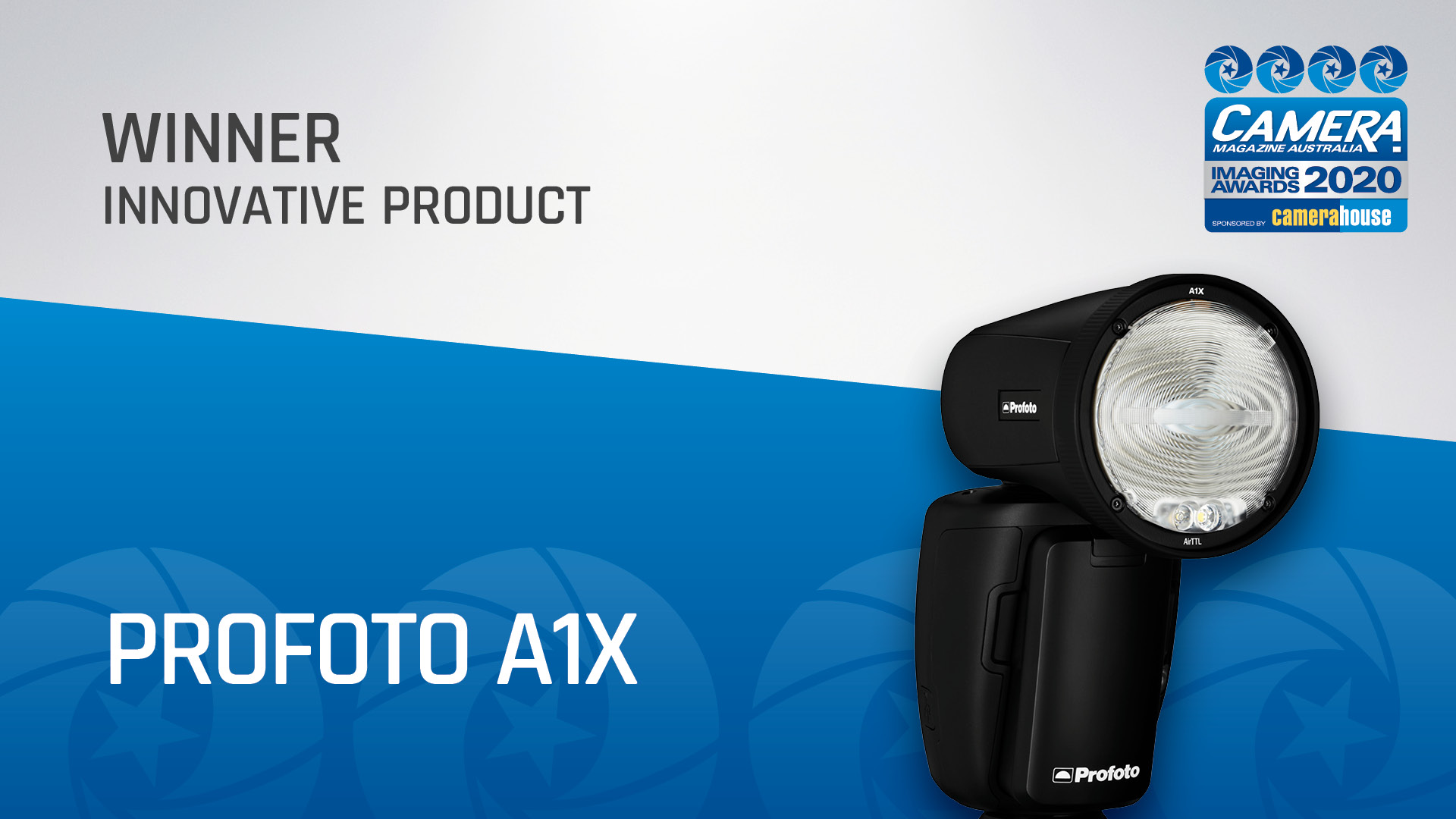
Innovative product winner: Profoto A1X
We’ve re-introduced an Innovative Product category because there’s just so much clever stuff happening right now… including in lighting.
In reality, there could have been a number of Profoto products capable of winning this category such has been the Swedish flash maker’s remarkable ability to re-invent itself in the face of the changing demands for photographic lighting.
Like all the professional flash companies, Profoto built its business on big and powerful flash packs for multiple heads… for which not much of a market is now left. Unlike its main rivals though, Profoto quickly adapted to making much more compact and portable battery-powered lighting systems and has never looked back. The original B1 battery-powered monobloc was a revelation, dispensing with any connecting cables and providing the convenience of TTL auto exposure control… a world first at the time. It was only logical that Profoto would take the next step and go portable enough to fit on a camera’s hotshoe. That was the A1 and it squeezed all Profoto’s ‘big flash’ know-how into an on-camera unit that still packed quite a punch and can be fitted with a variety of light-shaping accessories.
Now there’s the A1X which boasts a total of 30 updates, including a more powerful battery, faster recycling, more wireless channels and a revised display with higher resolution read-outs. Additionally, compatibility with camera TTL autoflash control systems is now extended to Sony, along with versions for Canon and Nikon.
Like the original, a key design element of the A1X is its round-shaped flash head which is designed to give a more uniform light pool with a more natural-looking fall-off. The zoom head is motorised with a manual override and an LED modelling lamp is built-in. In addition to the ‘AirTTL’ remote exposure control, the A1X also supports high-speed flash sync (HSS) at shutter speeds of up to 1/8000 second. The maximum flash power output is 76 joules – which is a lot in on-camera flash terms – and there’s a nine-stop adjustment range for applications such as balanced fill-in. A USB-C connection is provided to enable firmware upgrades. The A1X is powered by a rechargeable lithium-ion battery pack – surely the most sensible thing ever to happen to on-camera flash – and it’s good for a whopping 450 full-power flashes.
Quite simply, the Profoto A1X works effectively and efficiently which is why it’s (pun absolutely intended) a little flash of brilliance.
Read more
Best cheap camera deals in 2020
Australian Camera is the bi-monthly magazine for creative photographers, whatever their format or medium. Published since the 1970s, it's informative and entertaining content is compiled by experts in the field of digital and film photography ensuring its readers are kept up to speed with all the latest on the rapidly changing film/digital products, news and technologies. Whether its digital or film or digital and film Australian Camera magazine's primary focus is to help its readers choose and use the tools they need to create memorable images, and to enhance the skills that will make them better photographers. The magazine is edited by Paul Burrows, who has worked on the magazine since 1982.
